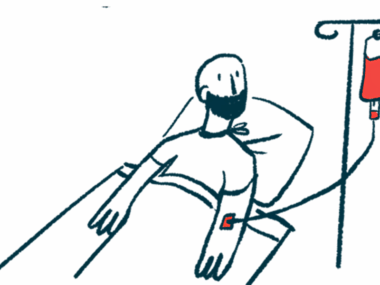#AANAM – Soliris Lessens gMG Flares and Crises, Real-world US Study Finds
Written by |

Editor’s note: The Myasthenia Gravis News team is providing in-depth coverage of the 2021 Virtual AAN Annual Meeting, April 17–22. Go here to read the latest stories from the conference
Soliris (eculizumab), a treatment for people with generalized myasthenia gravis (gMG) who fail to respond to other therapies, reduced exacerbations, MG crises, a hospitalization’s length, and the need for rescue therapy, according to data from a real-world U.S. study.
Its findings also showed that physicians caring for gMG patients were highly satisfied with Soliris.
Study results were featured in the poster, “Real-World Use of Eculizumab in Generalized Myasthenia Gravis in the United States: Results From a Pilot Retrospective Chart-Review Study,” presented at the 2021 American Academy of Neurology (AAN) Virtual Annual Meeting.
Soliris is approved to treat people with gMG — a more severe and widespread form of the disease — who have antibodies that target acetylcholine receptors (AChR), the most common cause of MG.
Soliris’ safety and efficacy in adults with gMG were evaluated in the Phase 3 REGAIN trial (NCT01997229) and its open-label extension (OLE) study (NCT02301624). In both trials, Soliris safely led to a clinically meaningful reduction in disease severity in patients who failed to respond to other immunosuppressive therapies.
Evidence supporting its real-world effectiveness in the U.S. since its October 2017 approval, however, is limited.
A team of investigators at Stanford Neuroscience Health Center in California, along with colleagues from Alexion Pharmaceuticals, Soliris’ developer, and other U.S. institutions examined the medical records of 84 adults with gMG who had received Soliris for at least six months.
Participants were assessed for two consecutive six-month periods: one before starting with Soliris and another while using the medication.
Study outcomes included assessing the effects of treatment on MG exacerbations (sudden worsening of symptoms), MG crisis (a potentially life-threatening weakening of breathing muscles), and the use of rescue therapy. Investigators also evaluated the effects of treatment on MG-related hospitalizations, as well as physicians’ satisfaction with Soliris.
Participants had a mean age of 46.3 years at the time of diagnosis, and 46% were female. Before treatment, most (71%) were classified as Myasthenia Gravis Foundation of America (MGFA) Class II-III (mild to moderate muscle weakness), while 10% were Class I (eye muscle weakness) and 14% were Class IV (severe muscle weakness). Five percent of patients were classified as “unknown.”
According to physicians, reasons for prescribing Soliris to their patients included inadequate control of disease symptoms with previous therapy (79%), intolerance to previous treatment (27%), patient’s request (18%), infusion scheduling (13%), and other reasons (1%).
During the six months before starting treatment with Soliris, 38.3% of patients experienced MG exacerbations and 24.7% reported an MG crisis. In contrast, in the six-month period following treatment initiation, 9.5% had MG exacerbations and 1.3% experienced an MG crisis.
The mean duration of hospital stays for an MG exacerbation was higher before treatment initiation than during Soliris’ use (6.1 vs. 5.3 days). The mean length of a hospital stay for MG crises was also higher in the six-month period preceding treatment than during treatment (7.7 vs. 5.0 days).
Regarding rescue therapy, 26 (32.1%) patients had been given intravenous immunoglobulin (IVIG) for MG exacerbations — a treatment that consists of immune proteins meant to quickly suppress the immune system — before Soliris. In contrast, six (7.1%) required IVIG for exacerbations occurring during its use.
Likewise, 19 (23.5%) patients were given IVIG for an MG crisis before Soliris initiation, and one patient (1.3%) during treatment.
Plasma exchange (or plasmapheresis), a procedure in which a patient’s blood plasma is removed, and filtered of harmful antibodies before being returned, was conducted in 11 (13.6%) patients for exacerbations and in nine (11.1%) for MG crisis before Soliris. During treatment, plasma exchange was not needed by any patient.
Researchers found similar results for high-dose or intravenous (into-the-vein) steroids.
For 96% of these patients, physicians stated they were satisfied with Soliris.
“Following [Soliris] initiation, a smaller number of patients experienced MG crisis or exacerbation, consistent with the trend observed in REGAIN and its OLE,” the investigators wrote. “However, these differences were not tested for statistical significance in the current study.”
“These findings will be further evaluated in a larger patient sample with longer follow-up,” they added.






Leave a comment
Fill in the required fields to post. Your email address will not be published.